Introduction
Transportation is a lifeline of modern society, enabling the movement of people and goods across the globe. However, this vital sector is highly vulnerable to disruptions caused by extreme weather events and climate variability. In this article, we will explore the intricate relationship between transportation and weather disruptions, examining the challenges faced by various modes of transportation and the innovative solutions that aim to enhance resilience in the face of changing weather patterns.
As we delve into the complexities of transportation and its vulnerability to weather disruptions, it becomes clear that this sector faces multifaceted challenges. These challenges encompass various modes of transportation, from road networks and railways to aviation and maritime transport. Weather disruptions can encompass a wide range of events, including hurricanes, blizzards, heatwaves, heavy rainfall, and even fog, all of which can significantly impact the transportation industry.
One prominent challenge arises from the increasing frequency and intensity of extreme weather events attributed to climate change. Coastal regions, for example, are experiencing rising sea levels and more powerful storms, putting ports and maritime transportation at risk. Hurricanes and typhoons can lead to port closures, disrupting global supply chains and delaying the movement of essential goods.
Road networks, the backbone of land transportation, face their unique set of weather-related challenges. Heavy snowfall can lead to treacherous driving conditions, while torrential rains can trigger landslides and flooding, rendering roads impassable. The transportation of goods and daily commutes can grind to a halt in such scenarios.
Aviation, another critical component of transportation, encounters turbulence not only from the skies but also from the changing climate. Extreme weather conditions can disrupt flight schedules, leading to delays and cancellations. Moreover, rising temperatures can affect aircraft performance, necessitating changes in flight plans and fuel consumption.
Railway systems, although known for their reliability, are not immune to weather disruptions. Heavy snow accumulation can obstruct tracks and create the risk of derailments, while extreme heat can cause tracks to buckle, requiring extensive repairs and service interruptions.
In response to these challenges, the transportation industry is increasingly adopting innovative solutions to enhance resilience and adapt to the changing climate. Weather forecasting and monitoring technologies have advanced significantly, providing transportation authorities with real-time data to make informed decisions during weather-related crises. For example, airlines can adjust flight routes to avoid turbulence or storms, minimizing delays and ensuring passenger safety.
Infrastructure resilience is another key focus. Reinforcing critical transportation infrastructure, such as bridges and tunnels, to withstand extreme weather events is becoming more common. Additionally, investments in sustainable transportation technologies, like electric vehicles and high-speed rail, aim to reduce the sector’s environmental impact while improving efficiency and reliability.
Collaboration between the public and private sectors is also vital in addressing weather-related challenges. Governments and transportation companies are working together to develop comprehensive disaster preparedness plans, ensuring a coordinated response in times of crisis.
In conclusion, while transportation remains susceptible to weather disruptions, innovative technologies, infrastructure improvements, and collaborative efforts are shaping a more resilient and adaptable industry. As the impacts of climate change continue to unfold, the transportation sector’s ability to weather the storm will play a crucial role in maintaining the flow of people and goods, both locally and globally.
Additionally, you can find further information on this topic by visiting this page: 2017 Road Weather Management Performance Measures Update …
Extreme weather events, including hurricanes, floods, snowstorms, and heatwaves, can significantly impact transportation systems:
Extreme weather events can indeed have profound effects on transportation systems, potentially causing disruptions and safety concerns. Here are some ways in which different modes of transportation can be affected:
Air Travel:
- Flight Delays and Cancellations: Thunderstorms, heavy snowfall, and low visibility can lead to flight delays and cancellations, affecting travelers’ schedules.
- Airport Closures: Severe weather conditions may force the closure of airports, stranding passengers and disrupting air travel operations.
- Turbulence: Stormy weather can result in turbulence during flights, making air travel less comfortable and potentially causing passenger anxiety.
Road Transportation:
- Road Closures: Flooding, landslides, and snow accumulation can lead to road closures, hindering the movement of vehicles.
- Accidents: Slippery roads and reduced visibility in adverse weather conditions can increase the risk of accidents and traffic congestion.
- Public Transit Delays: Public transportation services, including buses and trains, may experience delays or disruptions due to extreme weather.
Maritime Transportation:
- Port Closures: Severe storms, hurricanes, or ice conditions can lead to the temporary closure of ports, impacting shipping schedules and cargo transportation.
- Navigation Challenges: Fog, heavy rainfall, and strong currents can pose navigation challenges for maritime vessels.
Rail Transportation:
- Track Damage: Flooding, landslides, and heavy snowfall can damage railway tracks, leading to service interruptions.
- Reduced Speed: Adverse weather conditions may require trains to reduce speed for safety reasons, prolonging travel times.
Public Transit and Commuting:
- Disrupted Services: Buses, trams, and commuter trains may experience service disruptions during extreme weather events, affecting daily commutes.
Cycling and Walking:
- Unsafe Conditions: Extreme heat, heavy rain, or icy sidewalks can make walking and cycling unsafe or uncomfortable.
Shipping and Freight:
- Cargo Delays: Extreme weather can cause delays in shipping and freight transportation, impacting supply chains and delivery schedules.
Aviation Safety:
- Deicing Procedures: In cold weather, aircraft may require deicing procedures, which can cause delays but are essential for safe takeoff.
Infrastructure Damage:
- Damage to Transportation Infrastructure: Hurricanes, floods, and other severe weather events can damage transportation infrastructure such as bridges, tunnels, and railway tracks.
Emergency Services:
- Increased Demand for Emergency Services: Extreme weather can lead to an increased demand for emergency transportation services, such as ambulances and rescue helicopters.
Logistical Challenges:
- Supply Chain Disruptions: Extreme weather events can disrupt supply chains, affecting the timely delivery of goods and materials.
In response to these challenges, transportation authorities and service providers often implement weather-related protocols, such as monitoring systems, emergency plans, and real-time communication with travelers. Adapting to climate change and investing in resilient transportation infrastructure are also essential steps in minimizing the impacts of extreme weather events on transportation systems.
For additional details, consider exploring the related content available here Transportation resilience to climate change and extreme weather …
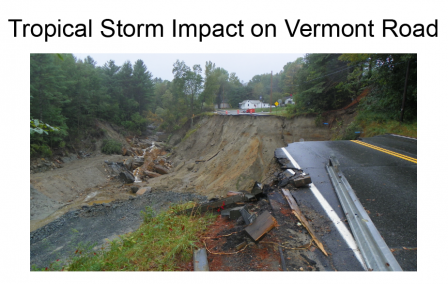
Heavy rainfall and flooding can damage road infrastructure, leading to road closures and traffic delays.Snow and ice accumulation can make roads hazardous, requiring extensive maintenance and causing accidents.
The impact of weather on road infrastructure is a relentless challenge faced by transportation authorities worldwide. Mother Nature’s capricious moods manifest in various forms, from heavy rainfall and flooding to snow and ice accumulation, each posing unique threats to road networks and safety:
Heavy Rainfall and Flooding: Torrential downpours, especially during monsoon seasons or severe storms, have the potential to wreak havoc on road infrastructure. Floodwaters can erode road surfaces, wash out bridges, and undermine the very foundations of roadways. The consequences are far-reaching, leading to road closures that disrupt daily commutes and commerce. Prolonged flooding can also weaken road structures, necessitating costly repairs.
Snow and Ice Accumulation: In regions where winter descends with a frosty grip, snow and ice accumulation become perennial adversaries. These icy coatings render roads treacherous, increasing the risk of accidents. Transportation authorities respond by deploying snowplows, salt trucks, and de-icing agents to clear and maintain road surfaces. The ongoing battle against winter weather is not only resource-intensive but also demands vigilant monitoring to ensure road safety.
Traffic Delays and Congestion: Weather-induced road closures and hazardous conditions inevitably result in traffic delays and congestion. Whether it’s commuters stuck in snarled traffic or goods delayed in transit, the economic and social impacts are palpable. Businesses experience disruptions to their supply chains, and commuters face extended travel times, affecting productivity and quality of life.
Erosion and Landslides: Coastal and mountainous regions are susceptible to weather-induced erosion and landslides. Heavy rainfall can trigger soil erosion, washing away road embankments and causing landslides that bury roads under a deluge of debris. These events not only require extensive cleanup but also demand proactive measures such as retaining walls and erosion control to prevent future occurrences.
Infrastructure Maintenance Costs: The toll on road infrastructure doesn’t end with the weather event itself. Post-weather repairs and maintenance add substantial costs to transportation budgets. Funds that could have been allocated for new projects or improvements are diverted to address the aftermath of weather-related damage.
Environmental Impact: The environmental consequences of weather-related road damage are also noteworthy. Erosion caused by heavy rainfall can result in sediment runoff into nearby water bodies, impacting water quality and aquatic ecosystems. Additionally, the use of salt for snow and ice removal raises concerns about its impact on soil and water quality.
Technological Solutions: Transportation authorities are increasingly turning to technology to mitigate the impacts of adverse weather. Advanced weather forecasting systems provide real-time data that allows for proactive responses, such as pre-treatment of road surfaces and targeted deployment of resources. Smart traffic management systems also help alleviate congestion during weather-related incidents.
Climate Resilience: As weather patterns become more erratic due to climate change, transportation planners are reevaluating infrastructure design and maintenance practices. Climate-resilient road designs, including elevated roadways in flood-prone areas and improved drainage systems, are becoming essential components of infrastructure planning.
In essence, the intricate interplay between weather and road infrastructure underscores the need for vigilance, adaptation, and investment in resilience. Transportation authorities continually grapple with the dual challenge of maintaining road safety and minimizing disruptions to daily life and commerce. As climate patterns evolve, the ongoing battle against the elements remains a pivotal aspect of modern transportation planning and management.
For additional details, consider exploring the related content available here Washington State Department of Transportation

Thunderstorms and lightning pose risks to aircraft, leading to flight cancellations and diversions.Fog and low visibility conditions can disrupt airport operations, affecting schedules.
Certainly, here’s an extended idea:
“Thunderstorms and lightning present significant risks to aviation, as they can disrupt flight operations in various ways. When thunderstorms are in the vicinity of airports or along flight paths, airlines often choose to delay or cancel flights to ensure passenger safety. Lightning strikes to aircraft can also lead to grounding for inspections and repairs, causing flight cancellations and inconveniences for travelers.
Additionally, fog and low visibility conditions can be equally disruptive to airport operations. Dense fog reduces visibility on runways and taxiways, impacting an airport’s capacity to handle takeoffs and landings. In such cases, flights may be delayed, diverted to alternative airports, or even canceled due to safety concerns.
These weather-related challenges underscore the importance of advanced weather forecasting and monitoring systems for aviation. By accurately predicting and tracking thunderstorms, lightning activity, fog, and other weather phenomena, airports and airlines can make informed decisions to minimize disruptions and ensure the safety and efficiency of air travel.”
For a comprehensive look at this subject, we invite you to read more on this dedicated page: Airline Customer Service Dashboard – Department of Transportation
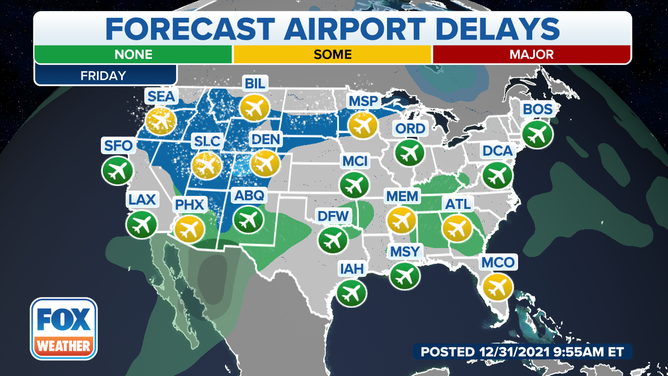
Hurricanes and strong winds can result in port closures, impacting cargo shipments and cruise schedules.Rising sea levels can pose challenges for coastal infrastructure and navigation.
Hurricanes, with their ferocious winds and torrential rains, are formidable adversaries for coastal regions and the transportation industry. These weather events often lead to the temporary closure of ports, disrupting the intricate web of global trade. Cargo shipments face delays, and cruise schedules can be thrown into disarray, affecting both tourism and the movement of goods.
The impact of hurricanes on ports is multifaceted. Strong winds can make it unsafe for vessels to enter or leave harbors, leading to temporary shutdowns. The risk of damage to ships, cargo, and port facilities is significant during these storms. Ports play a pivotal role in international trade, handling vast quantities of goods daily. Any disruption in their operations can ripple through the global supply chain, affecting industries and consumers worldwide.
Moreover, hurricanes and rising sea levels can pose long-term challenges for coastal infrastructure and navigation. Coastal cities and port facilities are increasingly vulnerable to storm surges and flooding, which can damage terminals, roads, and rail links. The ongoing rise in sea levels further exacerbates these risks, necessitating costly investments in infrastructure resilience.
Navigation also becomes more treacherous as water levels rise and weather patterns become less predictable. Coastal shipping routes may need to be adjusted, impacting logistics and increasing travel times. Navigational hazards, such as submerged debris from storm surges, pose risks to vessels, necessitating careful monitoring and clearance efforts.
To mitigate the impacts of hurricanes and rising sea levels on the transportation sector, a multi-pronged approach is essential. Weather forecasting and early warning systems have improved significantly, providing port authorities and ship captains with timely information to plan for and respond to impending storms. This proactive approach helps prevent accidents and protect human lives.
Investments in resilient port infrastructure are another critical step. Ports are reinforcing their facilities to withstand hurricane-force winds, storm surges, and flooding. This includes fortifying cargo storage areas, upgrading docking facilities, and elevating critical infrastructure to reduce vulnerability to rising sea levels.
The adoption of sustainable practices also plays a role in minimizing the transportation industry’s contribution to climate change, which is linked to the increasing frequency and intensity of hurricanes. Many transportation companies are exploring eco-friendly technologies and practices, from electrification in shipping to the development of more fuel-efficient aircraft.
In conclusion, while hurricanes and rising sea levels pose significant challenges to the transportation sector, proactive measures, technological advancements, and infrastructure improvements are helping the industry adapt and become more resilient. By addressing these challenges head-on, the transportation sector can continue to facilitate global trade and ensure the efficient movement of people and goods in the face of a changing climate.
Should you desire more in-depth information, it’s available for your perusal on this page: The impact of flooding on road transport: A depth-disruption function …

Flooding and landslides can damage railway tracks, leading to service interruptions.Extreme heat can cause rail buckling, necessitating speed restrictions.
Extreme weather events, including flooding, landslides, and extreme heat, can indeed have significant consequences for railway systems, impacting both passenger and freight transportation. Here’s an extended look at these challenges and potential solutions:
Flooding and Landslides:
- Damage to Railway Tracks: Flooding can submerge railway tracks, leading to erosion and structural damage. Landslides can cover tracks with debris, making them impassable.
- Service Interruptions: In the aftermath of flooding or landslides, rail services may be interrupted for safety reasons, causing inconvenience for passengers and disruptions to cargo transportation.
- Mitigation Measures: Railway operators implement preventive measures like drainage systems, embankment reinforcements, and early warning systems to reduce the risk of flooding and landslides.
- Emergency Response: Rapid response teams are deployed to assess and repair damaged tracks as quickly as possible to restore rail services.
Extreme Heat and Rail Buckling:
- Rail Buckling: Prolonged exposure to extreme heat can cause rail tracks to expand. If the expansion is not managed, it can result in rail buckling, where tracks bend or warp, posing a safety hazard.
- Speed Restrictions: To prevent rail buckling, rail operators may impose speed restrictions during hot weather, reducing the risk of track deformation.
- Thermal Welding: Some rail systems use thermite welding techniques to join rail segments, making them more resistant to temperature-related deformations.
- Track Inspections: Regular track inspections are crucial to identifying potential issues related to temperature variations, allowing for timely maintenance.
Climate-Resilient Infrastructure:
- Investing in Resilience: To cope with the challenges of extreme weather events, railways invest in climate-resilient infrastructure. This includes materials that can withstand temperature fluctuations and enhanced drainage systems.
- Weather Monitoring: Continuous weather monitoring and predictive modeling help rail operators anticipate extreme weather conditions and plan accordingly.
- Timely Maintenance: Scheduled and proactive maintenance is essential for keeping rail networks in good condition. This includes replacing aging infrastructure and addressing vulnerabilities.
Passenger Safety:
- Passenger Communication: Rail operators prioritize passenger safety by providing timely information about delays, disruptions, and alternative transportation options during extreme weather events.
- Emergency Protocols: Clear emergency protocols are in place to ensure the safety of passengers in case of unexpected disruptions.
Freight Transportation:
- Supply Chain Resilience: Freight companies work to enhance supply chain resilience by diversifying transportation modes and having contingency plans in place for rail disruptions.
- Weather Forecasting: Freight logistics incorporate weather forecasting into route planning to minimize the impact of extreme weather on cargo transportation.
In summary, railways face multiple challenges associated with extreme weather events, but proactive measures, investment in resilient infrastructure, and effective response strategies can help mitigate these challenges and ensure the continued operation of rail services even in adverse weather conditions.
For a comprehensive look at this subject, we invite you to read more on this dedicated page: Measuring Transportation System Resilience: Response of Rail …
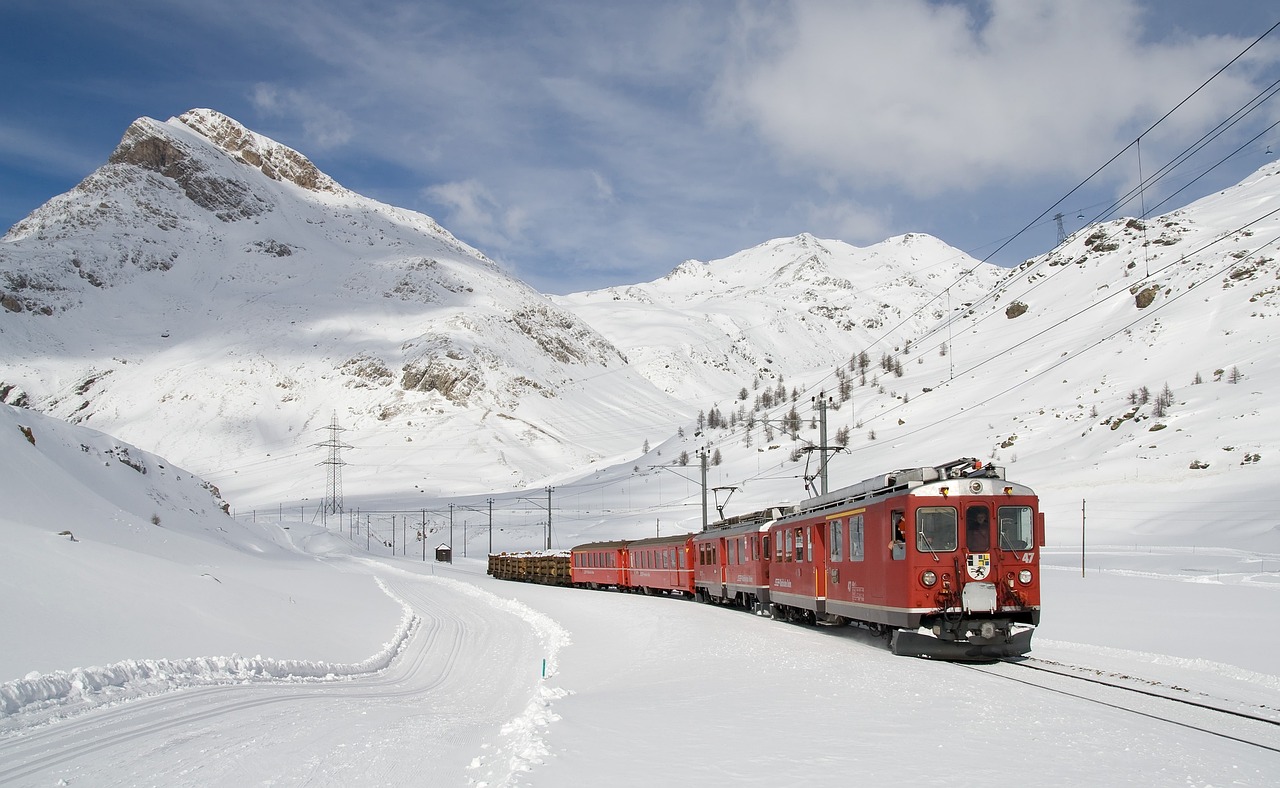
To address the challenges posed by weather disruptions, the transportation sector is adopting various strategies and technologies:
To navigate the stormy waters of weather disruptions, the transportation sector is charting a course toward resilience through an array of innovative strategies and technologies. These proactive approaches aim not only to mitigate the immediate impacts of adverse weather but also to build a more robust and adaptable transportation network for the future:
Weather Forecasting and Monitoring: Weather forecasting has entered the digital age with sophisticated meteorological models and real-time data streams. Transportation agencies are leveraging these advancements to monitor weather patterns meticulously. They receive early warnings of impending storms, heavy rainfall, or extreme cold, enabling proactive responses.
Preventive Maintenance: Proactive maintenance is key to minimizing weather-related damage. Transportation authorities implement preventive measures such as road surface treatments to prevent ice formation, trimming trees to reduce the risk of falling branches during storms, and reinforcing vulnerable infrastructure components.
Advanced Road Surface Technologies: Smart road surface technologies are becoming more prevalent. These include heated roadways that melt snow and ice, sensors that detect road surface conditions, and responsive signage to communicate real-time hazards to drivers.
Intelligent Traffic Management Systems: Intelligent traffic management systems integrate weather data into their operations. They adjust traffic signals, monitor road conditions, and provide real-time information to drivers about weather-related hazards, diversions, and speed limits.
Resilient Infrastructure Design: New infrastructure projects are increasingly designed with resilience in mind. Elevated roadways and bridges are constructed in flood-prone areas, and drainage systems are improved to mitigate the impacts of heavy rainfall. Infrastructure planners consider rising sea levels and extreme weather events when designing coastal and low-lying transportation links.
Asset Management and Predictive Analytics: Transportation agencies are adopting asset management systems that employ predictive analytics. These systems forecast when road components, such as bridges and culverts, are likely to require maintenance or replacement due to weather-related wear and tear.
Transportation Network Modeling: Sophisticated modeling tools help transportation agencies simulate and analyze the impacts of adverse weather on the entire network. This allows for better allocation of resources and the development of more resilient network strategies.
Emergency Response Protocols: Robust emergency response protocols are essential for efficiently managing weather-related incidents. Transportation agencies work in close coordination with emergency services to swiftly clear roads, manage accidents, and respond to any environmental hazards like spills or debris.
Public Communication and Education: Communication is paramount. Transportation agencies use various channels to inform the public about weather-related disruptions, road closures, and alternate routes. Education campaigns also encourage responsible driving during adverse weather, promoting safety for all road users.
Climate Adaptation Strategies: Recognizing the long-term impacts of climate change, transportation agencies are adopting climate adaptation strategies. These include identifying vulnerable infrastructure, setting emissions reduction goals, and integrating sustainability principles into transportation planning.
In a world where weather disruptions are increasingly unpredictable and severe, the transportation sector’s commitment to resilience is steering it toward safer, more efficient, and environmentally sustainable solutions. By blending advanced technologies, data-driven decision-making, and climate-conscious planning, transportation authorities are navigating the challenges of weather disruptions with greater confidence, ensuring that the arteries of commerce and daily life remain resilient even in the face of nature’s formidable forces.
You can also read more about this here: Climate Change Impacts on Transportation | US EPA

Advanced weather forecasting technologies enable transportation agencies to anticipate extreme weather events and plan accordingly.
Certainly, here’s an extended idea:
“Advanced weather forecasting technologies have revolutionized the way transportation agencies prepare for and respond to extreme weather events. By leveraging state-of-the-art meteorological data, predictive modeling, and real-time monitoring systems, these agencies can anticipate weather-related challenges and plan their operations with greater precision.
For instance, when a severe storm is forecasted, transportation agencies can proactively implement strategies such as pre-treating roads with salt or brine to prevent ice formation or deploying snowplows and road maintenance crews to clear snow and ice promptly. Similarly, during heavy rainfall or flooding events, agencies can closely monitor water levels, assess flood risks, and issue timely warnings to residents and travelers, allowing for safer evacuations and traffic management.
These advanced forecasting technologies not only enhance safety but also contribute to cost savings by optimizing resource allocation and minimizing the economic impact of weather-related disruptions. As climate change continues to introduce new challenges, the integration of cutting-edge weather forecasting into transportation planning and management will be essential for building resilient and efficient transportation systems.”
If you’d like to dive deeper into this subject, there’s more to discover on this page: Impact of Weather, Activities, and Service Disruptions on …

Investment in resilient infrastructure, such as flood-resistant roads and elevated railways, can reduce the impact of weather-related damage.
Investment in resilient infrastructure is a crucial aspect of ensuring that transportation systems can withstand the disruptions caused by weather-related events. As climate change continues to bring about more extreme weather patterns, such as intense rainfall, flooding, and storms, the vulnerability of traditional infrastructure becomes increasingly evident. However, through strategic investments and innovative approaches, we can significantly reduce the impact of weather-related damage on transportation networks.
One key element of building resilient transportation infrastructure is the construction of flood-resistant roads and elevated railways. These are critical, especially in low-lying and flood-prone regions. Flood-resistant roads are designed to withstand inundation and maintain functionality during and after heavy rainfall or river overflow. They often feature raised embankments, improved drainage systems, and materials that are less susceptible to water damage. In coastal areas, where storm surges are a concern, elevated roadways can provide a practical solution by lifting the road above the expected flood levels.
Elevated railways serve a similar purpose, allowing trains to continue operations even during severe flooding. By elevating the tracks above potential floodwaters, disruptions to commuter and freight rail services can be minimized. This approach has been particularly effective in regions prone to monsoon rains, hurricanes, and coastal flooding.
Another aspect of resilient transportation infrastructure is the integration of climate-responsive design principles. This includes considering the expected impacts of climate change, such as increased temperatures, changing precipitation patterns, and more frequent extreme weather events, during the planning and construction phases. By factoring in these climate considerations, infrastructure can be designed to withstand the challenges posed by a changing climate.
In addition to physical infrastructure improvements, advances in technology are playing a pivotal role in enhancing resilience. Advanced weather forecasting and monitoring systems provide real-time data on weather conditions, enabling transportation agencies to make informed decisions to protect passengers and assets. Communication networks and emergency response systems have also improved, allowing for swift evacuation and coordination during weather-related emergencies.
Furthermore, sustainable transportation initiatives, such as the development of electric and hybrid vehicles, contribute to both resilience and environmental sustainability. These vehicles often have better traction and performance in adverse weather conditions, and their reduced carbon emissions help mitigate climate change, ultimately reducing the frequency and severity of extreme weather events.
Public-private partnerships are essential for funding and implementing these resilience measures. Governments, transportation authorities, and private companies must collaborate to identify vulnerable areas, prioritize projects, and secure funding for construction and maintenance.
In conclusion, investment in resilient transportation infrastructure is essential for reducing the impact of weather-related damage and ensuring the reliability and safety of transportation networks in an era of climate change. By embracing innovative design, technology, and sustainable practices, we can create transportation systems that not only withstand the challenges of extreme weather but also contribute to a more sustainable and resilient future.
For additional details, consider exploring the related content available here 9.4 – Transportation, Disruptions and Resilience | The Geography of …
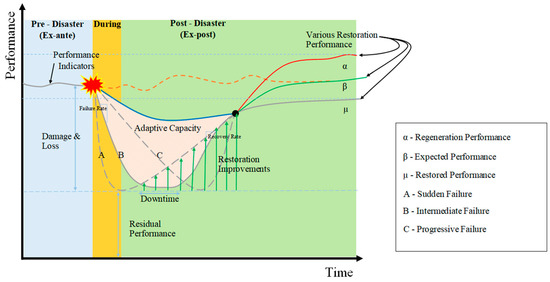
Transitioning to sustainable energy sources can reduce the carbon footprint of transportation and mitigate climate change impacts.
Transitioning to sustainable energy sources is a pivotal step in addressing the environmental and climate challenges associated with transportation. Here’s an extended exploration of how this transition can significantly reduce the carbon footprint of transportation and mitigate climate change impacts:
Shift to Electric Vehicles (EVs):
- Zero Emissions: Electric vehicles, including battery electric and hydrogen fuel cell vehicles, produce zero tailpipe emissions. This eliminates harmful pollutants such as carbon dioxide (CO2), nitrogen oxides (NOx), and particulate matter, which contribute to air quality degradation and climate change.
- Reduced Greenhouse Gas Emissions: EVs significantly reduce greenhouse gas emissions compared to traditional internal combustion engine vehicles. They are particularly effective when charged with electricity from renewable sources like wind, solar, or hydropower.
- Charging Infrastructure: Investments in EV charging infrastructure are essential to support the widespread adoption of electric vehicles and ensure convenient access to charging stations.
Hybrid Vehicles:
- Transitional Solution: Hybrid vehicles, which combine internal combustion engines with electric propulsion, offer a transitional solution. They can reduce fuel consumption and emissions while providing the familiarity of conventional vehicles.
- Improving Efficiency: Advances in hybrid technology aim to improve the efficiency of these vehicles, allowing for longer electric-only driving ranges and reduced reliance on fossil fuels.
Public Transportation and Sustainable Fuels:
- Mass Transit: Enhancing public transportation systems, including buses and trains, and transitioning them to run on sustainable fuels like electricity, hydrogen, or biofuels, can significantly reduce emissions from high-capacity urban transport.
- Biofuels: Sustainable biofuels, such as those produced from algae or waste materials, can serve as a lower-carbon alternative to conventional fossil fuels in certain transportation sectors.
Active Transportation and Public Policies:
- Walking and Cycling: Encouraging walking and cycling as modes of transportation reduces the need for fossil fuel-powered vehicles for short trips, contributing to reduced emissions and improved public health.
- Government Initiatives: Governments play a vital role in incentivizing the transition to sustainable transportation through policies such as subsidies for electric vehicles, fuel efficiency standards, and emissions reduction targets.
Efficiency Improvements:
- Lightweight Materials: Innovations in materials science lead to the development of lightweight materials that can make vehicles more fuel-efficient.
- Aerodynamics: Streamlined vehicle designs and aerodynamic improvements reduce air resistance, enhancing fuel efficiency.
Public Awareness and Education:
- Consumer Choices: Educating consumers about the environmental benefits of sustainable transportation options empowers them to make informed choices when purchasing vehicles.
- Environmental Impact: Increasing public awareness of the environmental impact of transportation can drive demand for sustainable alternatives.
Infrastructure and Innovation:
- High-Speed Rail: Investment in high-speed rail networks can offer energy-efficient alternatives for long-distance travel, reducing the reliance on air travel for certain routes.
- Innovation: Ongoing innovation in transportation technologies, such as autonomous vehicles, can further enhance energy efficiency and reduce emissions.
In conclusion, transitioning to sustainable energy sources and modes of transportation is a critical strategy for reducing the carbon footprint of the transportation sector. It not only helps mitigate climate change impacts but also improves air quality, public health, and overall sustainability. Collaboration among governments, industry, and individuals is essential to accelerate this transition and achieve a more sustainable and environmentally responsible transportation system.
Looking for more insights? You’ll find them right here in our extended coverage: Analysis & Projections – U.S. Energy Information Administration (EIA)

Promoting alternative modes of transportation, such as public transit and cycling, can reduce reliance on weather-vulnerable personal vehicles.
Promoting alternative modes of transportation stands as a cornerstone in the quest for a more resilient and weather-proof transportation system. By shifting the emphasis from individual weather-vulnerable personal vehicles to collective and weather-resilient modes of transit, numerous benefits unfold:
Reduced Traffic Congestion: Public transit and cycling initiatives can ease traffic congestion during inclement weather. Fewer single-occupancy vehicles on the road translate to smoother traffic flow, reducing the risk of accidents and congestion-related delays.
Climate Resilience: Public transit systems, when properly designed and maintained, often fare better than individual vehicles during extreme weather events. Buses and trains can continue to operate in rain, snow, or heat, providing a lifeline for commuters when roads are impassable.
Lower Emissions: Encouraging public transit and cycling contributes to environmental sustainability by reducing greenhouse gas emissions. Fewer cars on the road mean less air pollution and a smaller carbon footprint, fostering a cleaner and healthier environment.
Enhanced Accessibility: Public transit systems and cycling networks enhance accessibility, particularly for individuals who may not own a personal vehicle. This promotes social equity by ensuring that everyone has access to essential services, regardless of weather conditions.
Improved Health and Well-being: Promoting cycling not only reduces weather-related vehicle dependency but also encourages physical activity. Commuting by bicycle contributes to better physical fitness and mental well-being, aligning with a holistic approach to health.
Economic Benefits: Investing in public transit infrastructure and cycling facilities stimulates economic growth by creating jobs and supporting local businesses. Reduced congestion also has economic benefits, as it leads to shorter commutes and less wasted time for workers.
Community Building: Public transit hubs and cycling infrastructure can serve as community focal points. They encourage social interaction and foster a sense of community, contributing to a more vibrant urban environment.
Resilience Planning: Promoting alternative transportation modes encourages cities to incorporate resilience into their transportation planning. This includes designing transit systems and cycling routes with weather resilience in mind, ensuring that they remain operational during adverse conditions.
Reduction in Parking Demand: A shift toward public transit and cycling reduces the demand for parking infrastructure. This can free up valuable urban space for parks, green areas, or other community-oriented developments.
Adaptive Strategies: In regions prone to specific weather-related challenges, such as heavy rainfall or snow, promoting public transit and cycling can be part of adaptive strategies. Transit agencies can invest in weather-resistant vehicles and maintenance practices, while cycling networks can be designed to accommodate varying weather conditions.
Education and Awareness: Education campaigns and awareness initiatives can play a pivotal role in encouraging alternative transportation modes. Public transit education programs and cycling safety courses can instill confidence in commuters, making them more willing to embrace these options.
Incentives and Subsidies: Governments and employers can provide incentives and subsidies to promote public transit and cycling. These can include reduced fares, tax incentives, and facilities such as bike storage and shower facilities at workplaces.
Promoting alternative modes of transportation is not just about offering options; it’s about transforming urban mobility into a resilient and sustainable system that weathers the storms of climate change and extreme weather events. By encouraging the use of public transit and cycling, cities can forge a path toward a more adaptable and weather-resilient transportation future.
Additionally, you can find further information on this topic by visiting this page: Climate Change Impacts on Transportation | US EPA
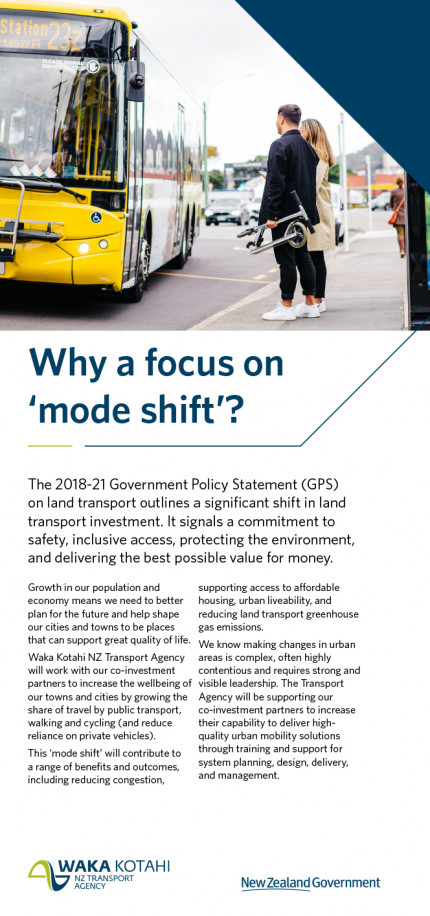
Robust emergency response plans and coordination among transportation agencies can minimize disruptions and enhance recovery efforts.
Certainly, here’s an extended idea:
“Robust emergency response plans and effective coordination among various transportation agencies are critical components of disaster preparedness and recovery efforts. In the face of extreme weather events or natural disasters, such as hurricanes, earthquakes, or wildfires, these plans play a pivotal role in minimizing disruptions and ensuring a swift and efficient recovery process.
One key aspect of these plans is the establishment of clear communication channels and protocols among transportation agencies, emergency services, and local authorities. When a disaster strikes, timely and accurate information-sharing is essential for making informed decisions regarding road closures, evacuation routes, and the deployment of emergency services. Effective coordination ensures that resources are allocated where they are needed most urgently.
Furthermore, proactive measures like pre-positioning response teams, equipment, and supplies in strategic locations can expedite the recovery process. Transportation agencies can also collaborate with utility providers to restore power to critical infrastructure, such as traffic signals and public transportation systems, swiftly.
In essence, robust emergency response plans, coupled with seamless coordination, not only minimize the immediate impact of extreme weather events on transportation but also contribute significantly to the resilience and recovery of communities and infrastructure.”
To delve further into this matter, we encourage you to check out the additional resources provided here: Emergency Response Plan | Ready.gov

Innovations in transportation technology, including autonomous vehicles, real-time monitoring systems, and smart infrastructure, offer promising solutions to improve transportation resilience and minimize weather-related disruptions. These technologies enhance safety, reduce congestion, and increase overall efficiency.
Innovations in transportation technology are poised to play a pivotal role in enhancing transportation resilience and minimizing disruptions caused by weather-related events. These advancements encompass a range of solutions, from autonomous vehicles to real-time monitoring systems and smart infrastructure. By leveraging these technologies, we can significantly improve transportation systems, making them more adaptable and responsive to weather challenges.
Autonomous Vehicles: Autonomous or self-driving vehicles have the potential to transform transportation resilience. These vehicles can navigate adverse weather conditions with greater precision and safety than human drivers. Equipped with advanced sensors and real-time data, autonomous vehicles can adjust their driving behavior to match changing weather patterns, ensuring safer journeys for passengers. Additionally, they can communicate with each other and with transportation infrastructure, optimizing traffic flow and reducing the risk of accidents during adverse weather.
Real-Time Monitoring Systems: Weather-related disruptions often catch transportation systems off guard. However, real-time monitoring systems provide crucial data on weather conditions, allowing transportation agencies to proactively respond to impending weather events. Advanced weather forecasting, combined with sensor networks along roadways, railways, and at transportation hubs, offers the ability to monitor temperature, precipitation, wind speed, and other relevant metrics. When severe weather is detected, these systems can trigger alerts, prompt speed limit adjustments, or even suggest alternate routes to avoid trouble spots.
Smart Infrastructure: The concept of smart infrastructure involves integrating technology into transportation assets like bridges, tunnels, and traffic management systems. Smart infrastructure can monitor its own condition and performance, providing early warnings of potential issues, especially during extreme weather events. For instance, sensors embedded in bridges can detect ice accumulation or structural stress and alert maintenance teams to take preventive measures. Traffic signals can be dynamically adjusted to alleviate congestion during heavy rainfall or snowstorms, ensuring smoother traffic flow.
Electric and Hybrid Vehicles: The transition to electric and hybrid vehicles not only reduces greenhouse gas emissions but also contributes to transportation resilience. These vehicles often have better traction and handling in adverse weather conditions, making them more reliable during storms or on slippery roads. Additionally, their regenerative braking systems can improve control and reduce the risk of accidents in inclement weather.
Communication and Connectivity: Robust communication networks are essential for weather resilience. Reliable cellular and data connectivity enable real-time communication between vehicles, infrastructure, and transportation authorities. This connectivity supports emergency response coordination, traffic management, and the dissemination of weather alerts to drivers. Moreover, it facilitates the integration of various transportation technologies, creating a cohesive and responsive system.
Data Analytics and Predictive Modeling: Data analytics and predictive modeling can enhance transportation resilience by analyzing historical weather data and predicting potential disruptions. These tools can identify high-risk areas and help transportation agencies develop targeted strategies for mitigating weather-related challenges. Predictive models can also optimize transportation operations, such as scheduling maintenance activities during favorable weather conditions.
In conclusion, innovations in transportation technology offer a promising pathway to improve transportation resilience and minimize the disruptions caused by weather-related events. By embracing autonomous vehicles, real-time monitoring systems, smart infrastructure, and other cutting-edge solutions, transportation systems can become more adaptable, safer, and efficient in the face of adverse weather. These advancements not only enhance passenger safety and convenience but also contribute to the overall sustainability and resilience of transportation networks.
If you’d like to dive deeper into this subject, there’s more to discover on this page: 9.4 – Transportation, Disruptions and Resilience | The Geography of …

The transportation sector is essential for the functioning of societies and economies worldwide. As weather patterns become more unpredictable and extreme due to climate change, addressing weather disruptions in transportation is critical. By investing in resilient infrastructure, adopting sustainable practices, and leveraging cutting-edge technology, the transportation industry can navigate the challenges posed by weather disruptions and ensure the continued flow of people and goods.
The transportation sector, often considered the lifeblood of economies and societies, faces an increasingly urgent need to address weather disruptions due to climate change. Here, we delve into how the transportation industry can proactively manage these challenges and ensure the smooth flow of people and goods:
Resilient Infrastructure Development:
- Climate-Resilient Design: Building transportation infrastructure with climate resilience in mind is paramount. This includes designing roads, bridges, ports, and airports to withstand extreme weather events such as heavy rainfall, flooding, and storm surges.
- Elevated and Flood-Resistant Infrastructure: In flood-prone areas, elevating key transportation infrastructure or implementing flood-resistant designs can help prevent damage and maintain accessibility during floods.
- Maintenance and Monitoring: Regular maintenance and monitoring of infrastructure can detect vulnerabilities and preemptively address wear and tear caused by weather events.
Weather Forecasting and Early Warning Systems:
- Advanced Weather Prediction: Leveraging cutting-edge meteorological technology and data analytics, transportation authorities can receive timely and accurate weather forecasts to anticipate disruptive events.
- Early Warning Systems: Developing early warning systems allows transportation agencies to alert travelers and operators about impending weather disruptions, facilitating informed decisions and risk mitigation.
Diversification of Transportation Modes:
- Multi-Modal Transportation: Promoting multi-modal transportation networks that include options like rail, road, air, and maritime transport can help mitigate disruptions. When one mode is affected, alternative modes can be employed.
- Interconnectivity: Integrating transportation modes and creating efficient intermodal transfer points enhances the overall resilience of transportation systems.
Sustainable Practices:
- Green Transportation: Encouraging the use of green transportation options, such as electric vehicles, bicycles, and public transit, reduces the carbon footprint of the transportation sector and contributes to climate change mitigation.
- Efficient Routing: Implementing intelligent transportation systems (ITS) and routing algorithms can optimize traffic flow, reduce congestion, and minimize emissions.
Emergency Response and Preparedness:
- Contingency Plans: Developing comprehensive contingency plans for various weather-related scenarios ensures that transportation authorities and agencies are well-prepared to respond quickly and effectively in emergencies.
- Evacuation Procedures: In regions prone to severe weather events like hurricanes, having well-defined evacuation routes and procedures can save lives.
Community Engagement and Education:
- Public Awareness: Educating the public about the impact of extreme weather on transportation and encouraging preparedness, such as carrying emergency kits in vehicles, can improve overall resilience.
- Community Collaboration: Engaging with local communities, businesses, and residents in disaster preparedness and response efforts fosters a sense of collective responsibility.
Technological Innovations:
- Connected Vehicles: The integration of connected vehicle technology can enhance communication between vehicles, infrastructure, and transportation management centers, improving safety and responsiveness during adverse weather conditions.
- Autonomous Vehicles: Autonomous vehicles equipped with advanced sensors and algorithms can navigate challenging weather conditions more safely.
In summary, as climate change continues to manifest in increasingly severe and unpredictable weather events, the transportation sector must adapt and innovate to ensure uninterrupted mobility and the continued flow of goods and people. By embracing resilient infrastructure, sustainable practices, advanced technology, and community engagement, the industry can rise to the challenges posed by extreme weather and contribute to a more resilient and sustainable future.
For additional details, consider exploring the related content available here Climate Impacts on Transportation | Climate Change Impacts | US EPA
More links
Explore this link for a more extensive examination of the topic: Measuring Transportation System Resilience: Response of Rail …
